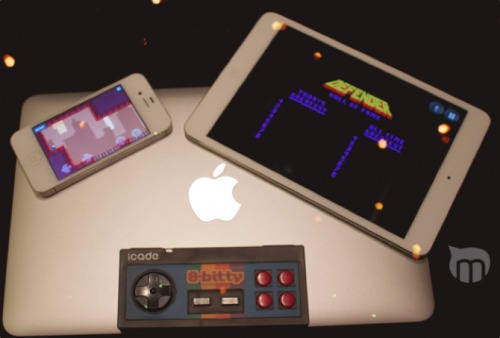
We’re a week out from the keynote at WWDC. My bet on the boring and too long game demo is going to be another EA franchise moving to mobile. I don’t expect much in the way of new gaming tech to come out of WWDC, unless we finally see games on the Apple TV. This week we’ll take a look at the conclusion to Double Fine’s adventure game. I’ll also look at a game that combines a sim with a space adventure. Closing out the week, I’ve got Obsidian’s tribute to the classic RPG.
Table of Contents
Broken Age (Act 2) – iOS(Universal)

Broken Age Act 2 closes out the game that promised to bring Adventure Games back into the mainstream. (As much as I love Double Fine, I think that Telltale deserves more than a little credit.) The game was split into two acts shortly before the launch, but with enough work to give the ending to the first act a mixture of accomplishment and cliffhanger.
The second act is loaded into the same app, so if you already own the game you can pick up right where you left off. If you don’t own the game, you’ll need to play through the first game. (Which is totally worth it.) If you haven’t played the first game, we’re going full spoilers here on Act 1. Consider yourself warned.
The game picks up right where Act 1 leaves off. Vella takes a swing at Shay and end up trapped aboard Mog Chothra/Shay’s Spaceship. You then get to explore the world of each character through a different perspective. Almost every storyline in Act 1 has a thread that you pick up in the second act, and you get some real answers.
The gameplay is the same point and click style of the first game, but the puzzles are a lot more difficult. Unfortunately, that’s because the puzzles are less intuitive than Act 1. There’s a lot more emphasis on playing through both stories at the same time. You’ll find clues in each game that correspond to puzzles in the other. However, some of these are still a bit too difficult to figure out even with hints. There’s a few places where you’re just clicking around blindly through situations hoping to find something to interact with.
That’s a small concern with a game that closes out my iPad game of the year. The story and cast are still perfect, and there’s a real sense that you’re getting pay off for the story you invested in with the first act.
What’s Good: Great writing, good voice cast, perfectly closes out game.
What Sucks: Puzzles are bit more random.
Buy it?: If you played the first game, or just love Adventure Games, you need to pick up Broken Age Act 2. Download the it from the App Store for $9.99.
Cities: Skylines – Mac
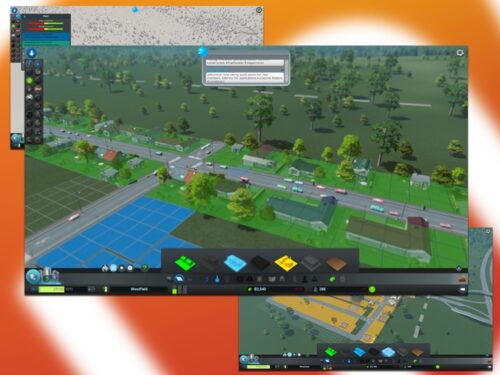
EA’s stewardship of the Sim City franchise was so bad that its studio, Maxis, is dead. The last major release was marred by a poorly executed DRM scheme. Cities: Skylines could have phoned in a warmed over copy of Sim City: 2000 and still have made a huge splash. Instead they managed to make something new, with a huge modding community.
Building your city is pretty straight forward. You get a small area with a ramp off the freeway. You then build your roads and zone your city out for people and businesses to settle. There are some improvements over the standard Sim City model. You have to consider the entire water supply, including making sure your water intake is upriver from your waste drainage. There’s a whole system built up in managing renewable resources, including wind patterns.
The open nature of the game might make you think that this is GIMP to Sim City’s Photoshop. Instead, it might be better to think of this like Pixelmator or Acorn. An indie alternative that cuts out the bloat and refocuses on the user.
That isn’t to say that it’s a perfect game. The tutorial isn’t very thorough, and it’s easy to end up in over your head quickly. I was also frustrated by the large system requirements, since this seems like a perfect bored laptop game. That does make a pretty game, with some stunning detail on the modeling. I just would like the ability to scale it down to play on my Air.
What’s Good: Excellent and open take on the city building genre. Several unique features.
What Sucks: High system requirements. Needs better tutorial.
Buy it?: If you miss classic Sim City, or just want a more customizable take on city building, check out Cities: Skylines. Buy it from the developer’s site for $29.99.
The Spatials – Mac
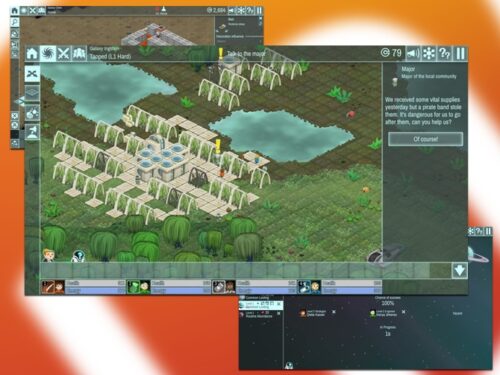
The Spatials has an interesting idea. Placing you in charge of building a space station on a moon and building out accommodations, food service, manufacturing, and everything you need for your small little economy. Passengers arrive and buy your goods, and you’ll need build out manufacturing and storage for everything. You get reports on your visitor’s happiness and what they would prefer you had for sale.
Building your station is going to require resources and a crew. You get a default crew with a member of each class. The classes are diplomat, doctor, strategist, engineer, and scientist. Each class has their own special ability. You lead them in away missions on planets, usually shooting exotic fauna and pirates. Once these are beaten you can unlock contracts to get resources delivered every few turns. You will also need to recruit new officers, so you can take on some of the automated bounties. As you explore new systems you’ll need new diplomats to increase the frequency of trading.
The art has a cool cartoon style that really sells the game. Everything has a unique sci-fi feel, just reminiscent of classic designs. The game has a lot going on, and it nicely melds a light space shooter with a space building sim. That complexity may work against the game, as it feels like the main mechanic takes a back seat to the adventures.
What’s Good: Lots of content, great art style.
What Sucks: Some game modes get overshadowed.
Buy it?: If you’re a fan of sci-fi action and sims, check out The Spatials. Pick it up on the Mac App Store for $12.99.
Spacecom – iOS (Universal)
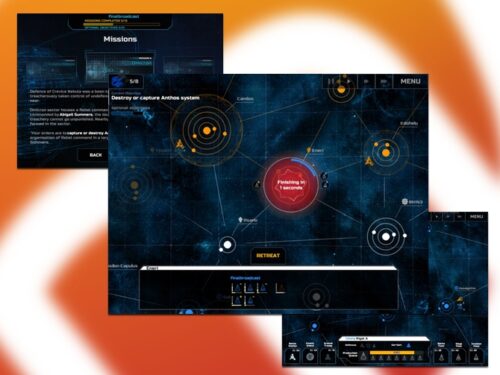
When you play a lot of strategy games, you often see a lot of trends. On mobile, the strategy genre is defined by minimalism. Spacecom riffs on this trend, playing a bit like Galcon. However, this is a far more comprehensive and strategic game.
The game has you playing a general fending off a rebellion. It’s fairly standard sci-fi stuff, and it’s only played out via text between missions. The game play is very simple. You command your ships by tapping on systems to send them along. You have three types of units, Battle, Siege and Invasion.
Each is used in a different way. The battle allows you to take our your enemy’s fleets, but they don’t last long in enemy territory. Siege systems are used to raze systems, ensuring that no one can use them. Invasions fleets allow you to capture systems.
The campaign is only around 13 missions long, but you can get more milage with AI skirmishes or online multiplayer. Sadly the online portion of the game doesn’t seem to have much of a community yet, but the AI skirmishes are still challenging.
What’s Good: Fun strategy: mixes complexity and accessibility well.
What Sucks: Simplistic story, lack of multiplayer community.
Buy it?: If you enjoy strategy games, but aren’t attached to an epic story check out Space Command. Pick it up on the App Store for $3.99.
Pillars of Eternity – Mac
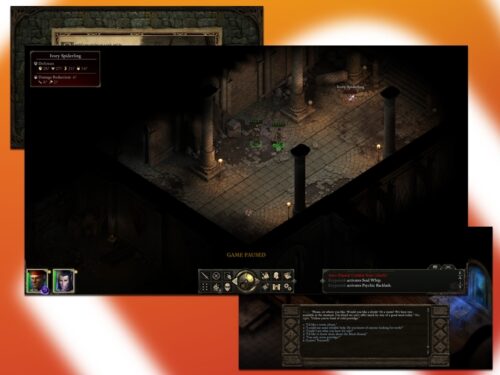
Pillars of Eternity is Obsidian’s tribute to the Baldur’s Gate/Fallout era of PC RPG’s. The isometric view and party based mechanics of those titles are given a bit of an upgrade, with the battle taking place in real time unless you choose to pause it. (There is a setting that allows you to automatically pause at the beginning of combat to issue your team’s orders.)
The story is a bit of a mess. You create you character from a huge array of choices, allowing you to fine tune your character. There isn’t as much details as say, Skyrim, but it’s comprehensive. You then start out in a caravan where you’ve taken ill and have to search for medicine. You’ll encounter crazy magical machines powered by souls, a town with a tree of corpses, and the haunted remains of a dead religion. That all takes place in the first few hours of the game.
The game isn’t afraid to be horribly difficult. You’ll need to think out your tactics and how you assign out your team. There’s sneaking and other mechanics that make the game much more interesting than a hack and slash adventure. Once you have a stronghold, you’ll be able to manage more than just your character.
Pillars of Eternity is a solid throwback. The modern era of open world RPG’s aren’t all bad, but it is nice to see something that isn’t a riff on Elder Scrolls. On the other hand, that means that it isn’t going to be accessible. The game gets a lot of points for sticking to its guns, but know what you’re getting into.
What’s Good: Great throwback to classic RPG style. Lots of character options and approaches to the game.
What Sucks: Difficult, and might not be accessible to younger players.
Buy it?: If you don’t mind slogging through a tough game, and a dark story, check out Pillars of Eternity. Download it from Obsidian for $44.99.






